
Bellerive Oval is a cricket oval and Australian rules football ground located in Bellerive, a suburb on the eastern shore of Hobart, Tasmania. Capable of accommodating 20,000 people, it is the 2nd largest stadium in Tasmania by seating capacity, behind York Park which can hold 21,000 people. It is the only venue in Tasmania which hosts international cricket matches.

The Tasmania men's cricket team, nicknamed the Tigers, represents the Australian state of Tasmania in cricket. They compete annually in the Australian domestic senior men's cricket season, which consists of the first-class Sheffield Shield and the limited overs Matador BBQs One-Day Cup.
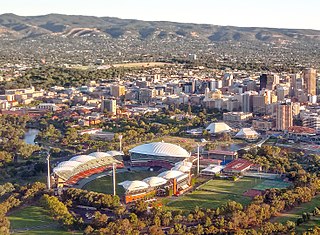
The Adelaide Oval is a sports ground in Adelaide in the state of South Australia. It is located in the parklands between the city centre and North Adelaide. The venue is predominantly used for cricket and Australian rules football, but has also played host to rugby league, rugby union, soccer, and tennis, as well as regularly being used to hold concerts.
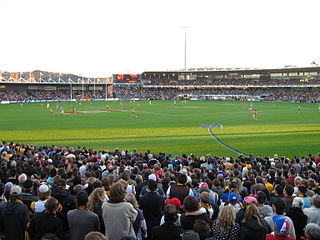
York Park is a sports ground in the Inveresk and York Park Precinct, Launceston, Australia. Holding 21,000 people, York Park is known commercially as University of Tasmania (UTAS) Stadium and was formerly known as Aurora Stadium under a previous naming rights agreement signed with Aurora Energy in 2004. Primarily used for Australian rules football, its record attendance of 20,971 was set in June 2006, when Hawthorn Football Club played Richmond Football Club in an Australian Football League (AFL) match.

The Brisbane Cricket Ground, commonly known as the Gabba, is a major sports stadium in Brisbane, the capital of Queensland, Australia. The nickname Gabba derives from the suburb of Woolloongabba, in which it is located. Over the years, the Gabba has hosted athletics, Australian rules football, baseball, concerts, cricket, cycling, rugby league, rugby union, Association football and pony and greyhound racing. At present, it serves as the home ground for the Queensland Bulls in domestic cricket, the Brisbane Heat of the Big Bash League and Women's Big Bash League, and the Brisbane Lions of the Australian Football League.
Michael James Di Venuto is an Australian cricket coach and former first-class cricketer who represented both Australia and Italy. The bulk of his first-class cricket career was spent playing for Tasmanian Tigers. After retiring from representative cricket in Australia, he continued playing for Durham County Cricket Club till July 2012, when he announced retirement from County Cricket. He has also previously played cricket in England for Derbyshire and Sussex. A left hand opening batsman, his form for Tasmania throughout the mid-1990s earned him a call up for the Australian national cricket team in the One Day International arena, although after nine games he was dropped. Like some of his contemporary Tasmanian teammates such as Jamie Cox, Dene Hills, and Shaun Young, Di Venuto can be considered unlucky to have not had a more successful international career, as he was playing at a time when the Australian national cricket team was highly dominant, and difficult to earn selection for. After retiring from Durham, he was appointed Australia's full-time batting coach by head coach Mickey Arthur, and was then head coach of Surrey from 2016 until 2020.

North Hobart Oval is a sports venue in North Hobart, Tasmania. It is widely regarded as the traditional home of Australian rules football in Tasmania. Since the 1950s, it has also become a prominent venue for soccer, rugby league, and rugby union in Tasmania.

Devonport Oval is an Australian rules football, cricket and athletics stadium in Devonport, Tasmania. It is the home stadium for the Devonport Football Club in the Tasmanian State League (TSL) and for the Devonport Cricket Club in the NWTCA competition. The oval also hosts the Devonport Athletics & Cycling Carnival each year and regularly attracts interstate competitors. The stadium has a capacity of 13,000 people, and has recently undergone upgrades for increased lighting to be used for night football matches in the TSL in 2009. There has been recent talk of selling the Devonport Oval, along with the East Devonport Oval and two other local recreation facilities, to fund a new sporting precinct in Devonport.

The North Tasmania Cricket Association Ground, better known as the NTCA Ground, is the oldest first-class cricket ground in Australia. It is a multi-use sports venue situated in Launceston, Australia. In 1851, the ground hosted Australia's first intercolonial and initial first class cricket match. It is currently used mostly for club cricket matches and has a capacity of under 10,000.

KGV Oval is a multi-purpose sports stadium located in Glenorchy, Tasmania. It serves as the home ground for the Glenorchy Football Club and the Southern Football League, and it is also used by the Glenorchy Cricket Club.

South Hobart Football Club is an Australian soccer club based in Hobart, Tasmania. Founded in 1910, the club currently competes in the NPL Tasmania. South Hobart plays home games at South Hobart Ground and also fields teams in all junior divisions, as well as women's teams.
Cricket Tasmania Premier League, or Tasmanian Premier Cricket, refers to the hierarchically graded cricket competitions played in Tasmania, Australia. The Cricket Tasmania Premier League comes under the administration of Cricket Tasmania.
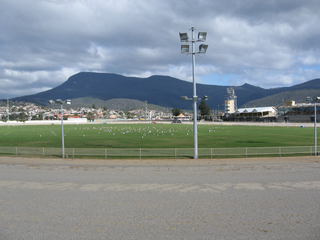
The Royal Hobart Showgrounds are the site of the Royal Hobart Show and many other smaller events including a market on the grounds every Sunday. The Royal Hobart Showground is located 10 km north of Hobart, between the junction to Brooker Highway/Goodwood Road and the Main Road in Glenorchy.

Sport is a significant aspect of the culture on the island state of Tasmania, Australia. Outside general recreational activities such as walking, gym or bushwalking, the most popular sports in Tasmania are swimming, athletics/track and field, cycling/mountain biking, golf and Australian rules football. Netball ranks as the most popular team sport for female participation, while cricket leads among male participants. The most widely played team sport is soccer, with an estimated 36,773 Tasmanians, comprising 6.8% of the state's population, participating annually.

West Park Oval is an Australian Rules football, cycling and athletics venue located on the shores of Bass Strait in Burnie, Tasmania. It is the current home of the Burnie Dockers in the Tasmanian State League and previously in the NTFL and in the original TFL Statewide League.
The Tasmanian State Premiership was an Australian rules football tournament which was contested at the conclusion of the season, initially between the reigning Tasmanian Football League (TFL/TANFL) and Northern Tasmanian Football Association (NTFA) premiers, and then from 1950 also by the NWFU premiers, to determine an overall premier team for the state of Tasmania. The state premiership was contested 57 times between 1909 and 1978.
Michael Philip Tame is a former Australian cricketer who played first-class cricket for Tasmania from 1984 to 1987. He also played in the Tasmanian Grade Cricket competition for Clarence District Cricket Club. He is the father of Grace Tame, Australian of the Year 2021.

The Tasmania Women cricket team, also known as Tasmanian Tigers and previously Tasmanian Roar, is the women's representative cricket team for the Australian State of Tasmania. They play their home games at Blundstone Arena, Hobart. They compete in the Women's National Cricket League (WNCL), the premier 50-over women's cricket tournament in Australia. They previously played in the now-defunct Australian Women's Twenty20 Cup and Australian Women's Cricket Championships.
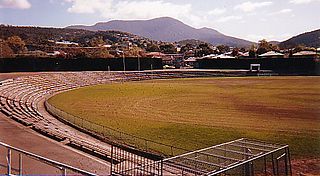
Queenborough Oval is the home headquarters of the Hutchins Old Boys Football Club and the South Hobart/Sandy Bay Cricket Club. The ground is a former Tasmanian Football League venue, being the former home of the Sandy Bay Football Club from 1945 to 1997. After the demise of Sandy Bay in 1997, Hutchins moved to the ground during the 1998 season after vacating their former home ground of 43 years just up the street from Queenborough. It is located on the corner of Nelson Road and Peel Street Sandy Bay, 5 km (3.1 mi) south of the Hobart CBD.
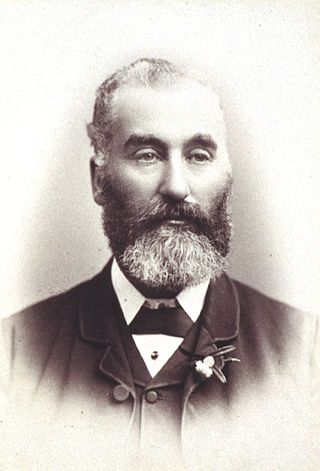
Sir John George Davies, generally known as (Sir) George Davies, was a Tasmanian politician, newspaper proprietor and first-class cricketer.


















